A series of powerful earthquakes that hit western Japan have left at least 48 people dead and damaged thousands of buildings, vehicles and boats. Officials warned that more quakes could lie ahead. Aftershocks continued to shake Ishikawa prefecture and nearby areas a day after a magnitude 7.6 temblor slammed the area on Monday afternoon.
Quick Read
- Devastating Earthquakes in Western Japan: Western Japan experienced a series of powerful earthquakes, leaving at least 48 people dead and causing extensive damage to thousands of buildings, vehicles, and boats.
- Aftershocks in Ishikawa Prefecture: The region, particularly Ishikawa prefecture, continued to experience aftershocks following a magnitude 7.6 earthquake on Monday afternoon.
- Casualties and Injuries: Officials in Ishikawa confirmed 48 deaths and reported 16 serious injuries. The extent of damage to homes was significant and challenging to assess immediately.
- Destruction of Homes: Tens of thousands of homes were reportedly destroyed, as per Japanese media, with some residents facing the complete loss of their homes and uncertain futures.
- Public Warnings and Response: Prompt public warnings and quick responses from the public and officials helped to control some of the damage. The nation’s preparedness for disasters was evident in the effective rescue efforts by firefighters, police, and the military.
- Preparedness for Disasters: University of Tokyo Professor Toshitaka Katada noted that the preparedness of the Japanese people, due to recent quake experiences, played a crucial role in handling the situation.
- Continued Risk of Earthquakes: Katada warned of the ongoing and unpredictable risk of further earthquakes, citing the 2011 quake and tsunami in northeastern Japan as a precedent.
- Widespread Damage and Rescue Efforts: Aerial footage showed extensive damage, including landslides, boats tossed in waters, and a major fire in Wajima city. Japan’s military dispatched 1,000 soldiers for rescue operations.
- Prime Minister’s Statement: Prime Minister Fumio Kishida emphasized the urgency of rescuing people trapped in homes and declared the government’s commitment to saving lives.
- Nuclear Plants Operating Normally: Despite the quakes, nuclear regulators confirmed that several nuclear plants in the region were operating normally, unlike the 2011 disaster.
- Tsunami Warnings and Evacuations: Tsunami warnings were issued for Ishikawa and other areas, with waves over one meter hitting some places. Evacuated residents sought shelter in auditoriums, schools, and community centers.
- Transportation and Infrastructure Impact: Bullet trains were halted, and highways closed, though services mostly resumed by Tuesday afternoon. Rain forecast raised concerns about further damage to weakened structures.
- Cultural and Tourist Areas Affected: The earthquake-affected region is known for its cultural heritage sites and traditional crafts.
- International Support: U.S. President Joe Biden offered assistance to Japan, highlighting the global support for the earthquake-stricken nation.
- Japan’s Geological Vulnerability: Japan’s frequent earthquakes are attributed to its location along the “Ring of Fire,” a zone prone to seismic activity.
The Associated Press has the story:
Powerful earthquakes leave at least 48 dead, destroy buildings in Japan
Newslooks- WAJIMA, Japan (AP)
A series of powerful earthquakes that hit western Japan have left at least 48 people dead and damaged thousands of buildings, vehicles and boats. Officials warned that more quakes could lie ahead.
Aftershocks continued to shake Ishikawa prefecture and nearby areas a day after a magnitude 7.6 temblor slammed the area on Monday afternoon.
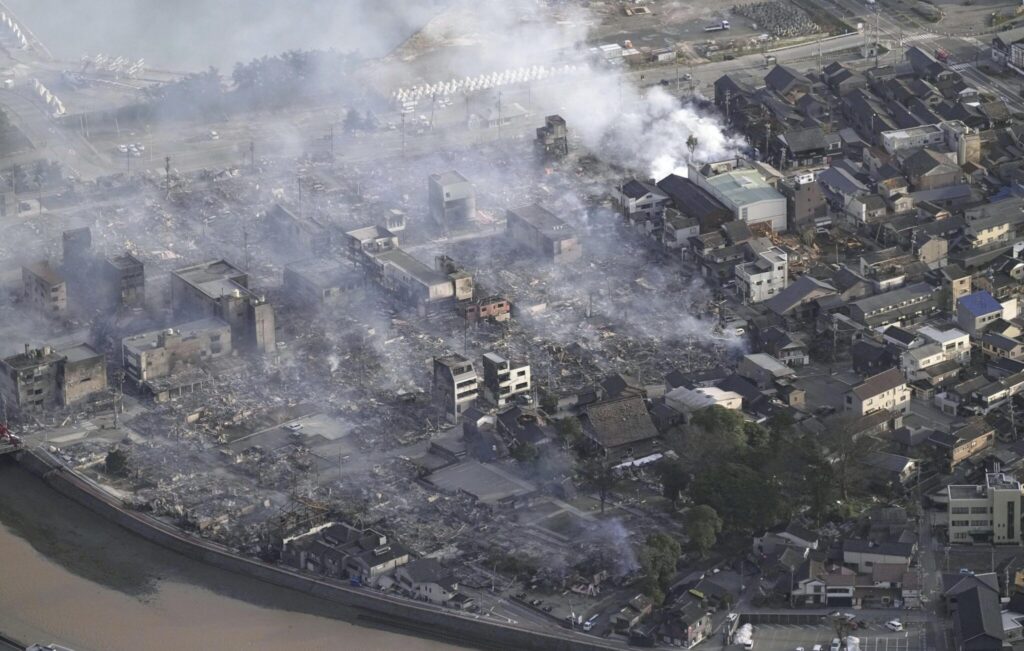
Forty-eight people were confirmed dead in Ishikawa, officials said. Sixteen others were seriously injured, while damage to homes was so great that it could not immediately be assessed, they said.
Japanese media reports said tens of thousands of homes were destroyed. Government spokesperson Yoshimasa Hayashi said 17 people were seriously injured and gave a slightly lower death tally, while saying he was aware of the prefecture’s tally.
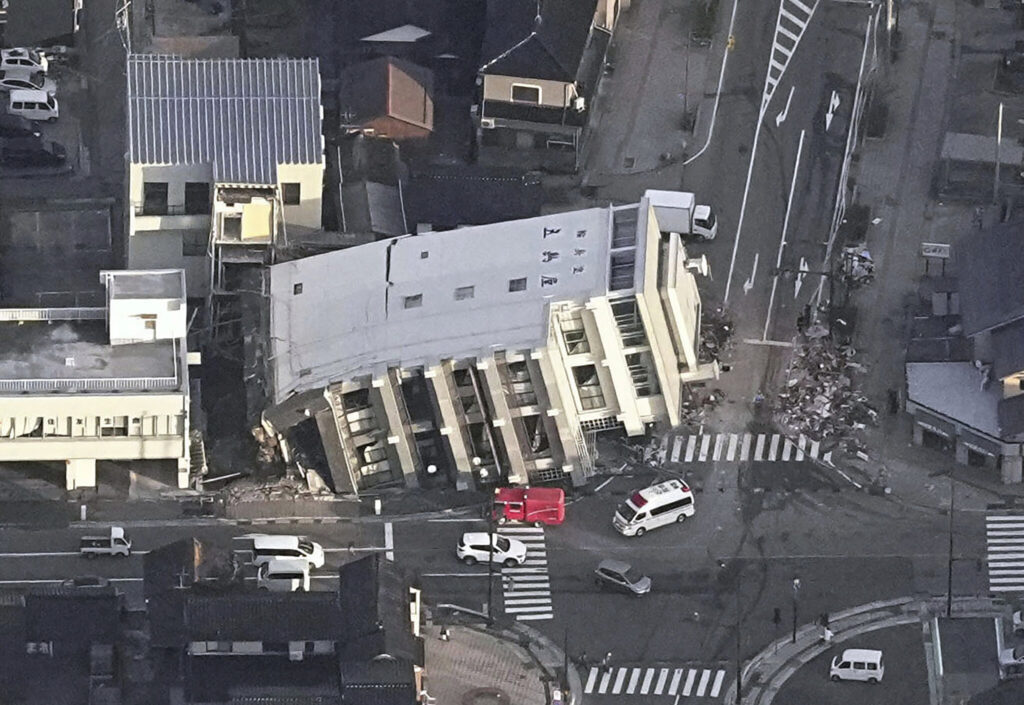
Water, power and cell phone service were still down in some areas, and residents expressed sorrow about their destroyed homes and uncertain futures.
“It’s not just that it’s a mess. The wall has collapsed, and you can see through to the next room. I don’t think we can live here anymore,” Miki Kobayashi, an Ishikawa resident, said as she swept around her house.
Their house was also damaged in a 2007 quake, she said.
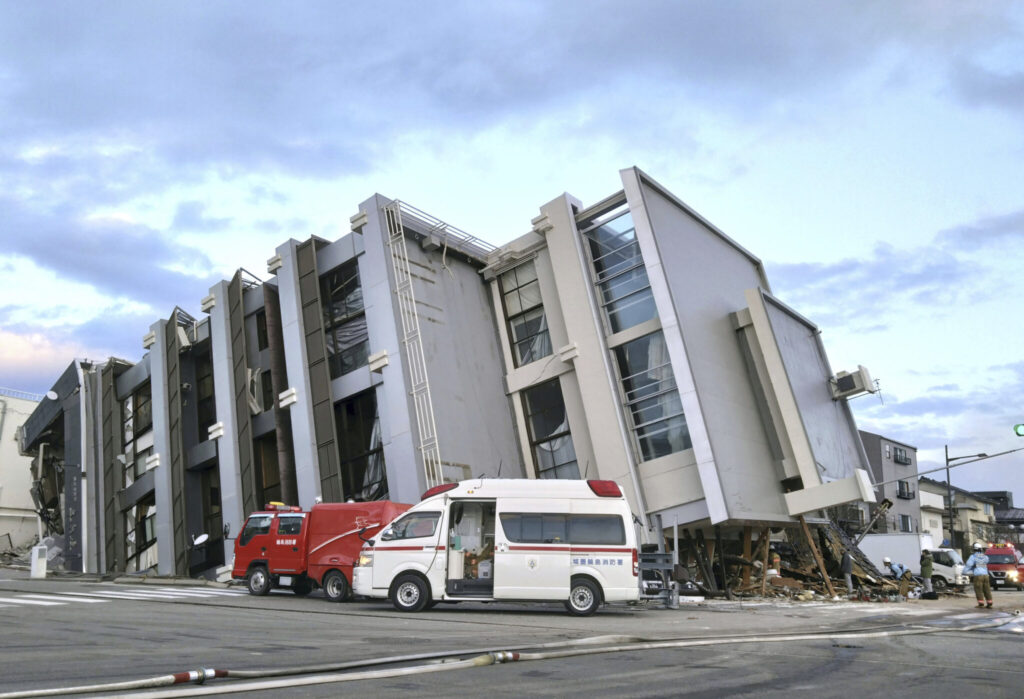
Although casualty numbers continued to climb gradually, the prompt public warnings, relayed on broadcasts and phones, and the quick response from the general public and officials appeared to have kept at least some of the damage under control.
The rescue efforts that quickly followed from firefighters, police and the military proved a testament to how this nation has repeatedly withstood disasters, which have practically become a part of everyday life.
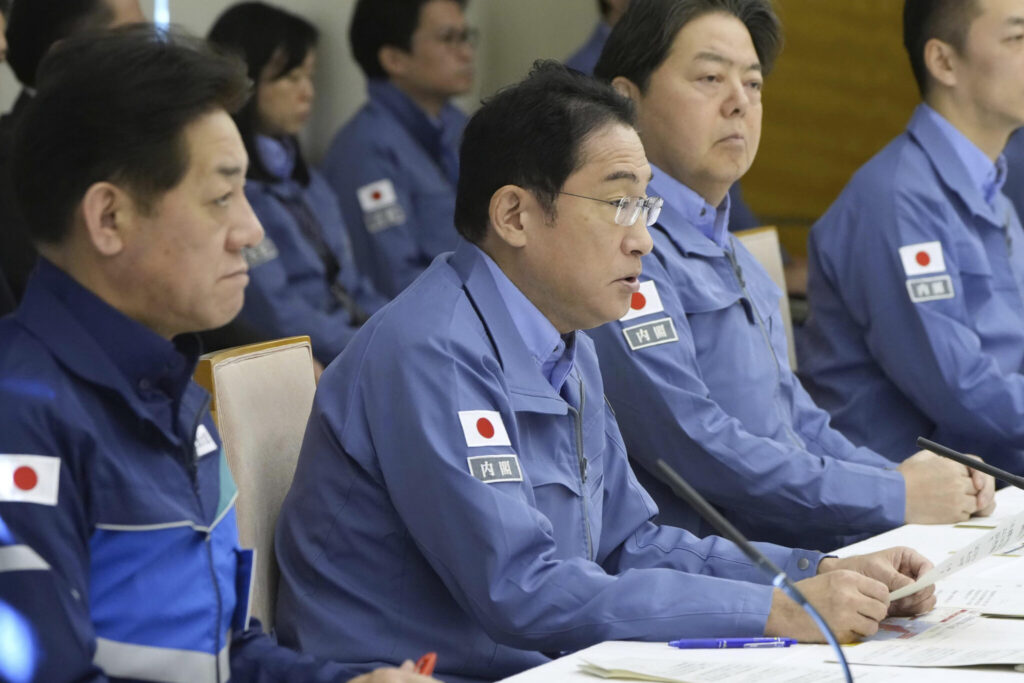
Toshitaka Katada, a University of Tokyo professor specializing in disasters, said the people were prepared because the area had been hit by quakes in recent years. They had evacuation plans and emergency supplies in stock.
“There is probably no people on earth other than Japanese who are so disaster-ready,” he said in a telephone interview with The Associated Press.
Katada warned the situation remains precarious and unpredictable. The March 2011 quake and tsunami in northeastern Japan had been preceded by other quakes.
“This is far from over,” Katada said.
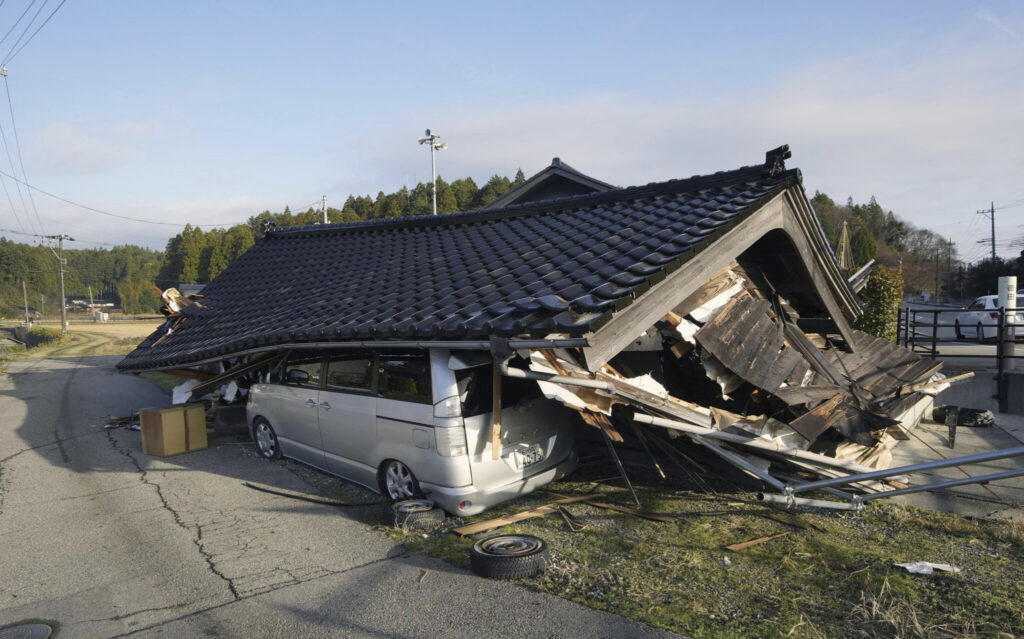
Predictions by scientists have repeatedly been proven wrong, such as with the 2016 quake in southwestern Kumamoto, an area previously seen as relatively quake-free. The only real projection possible is that you can’t make projections, Katada added.
“Having too much confidence in the power of science is very dangerous. We are dealing with nature.”
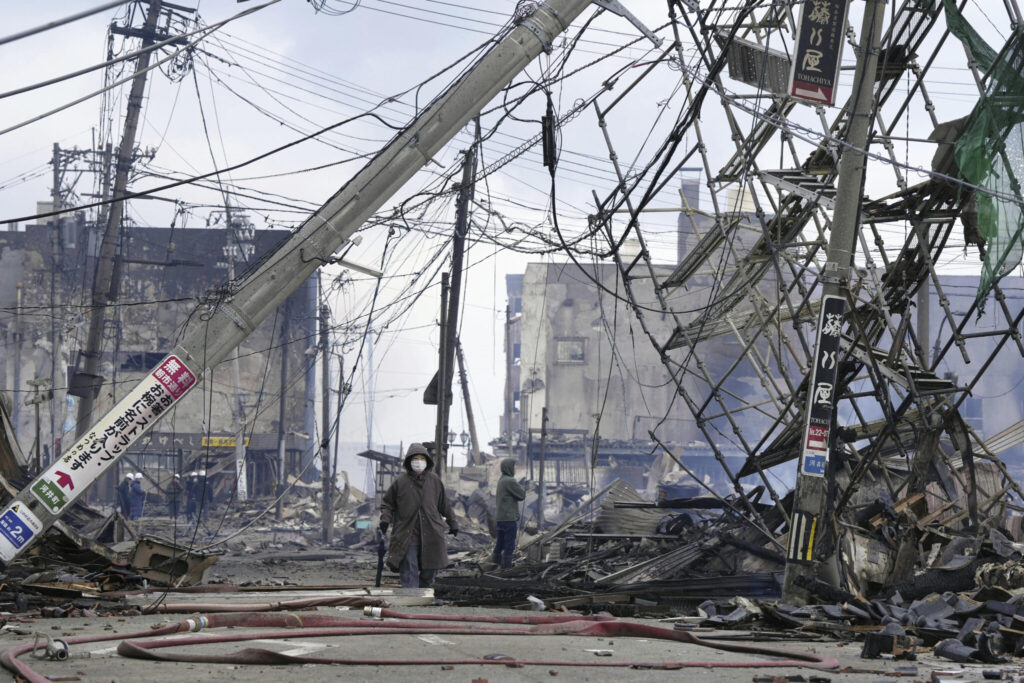
Japanese media aerial footage showed widespread damage in the hardest-hit spots, with landslides burying roads, boats tossed in the waters and a major fire that had turned an entire section of Wajima city to ashes.
Japan’s military dispatched 1,000 soldiers to the disaster zones to join rescue efforts, Prime Minister Fumio Kishida said Tuesday.
“Saving lives is our priority and we are fighting a battle against time,” he said. “It is critical that people trapped in homes get rescued immediately.”
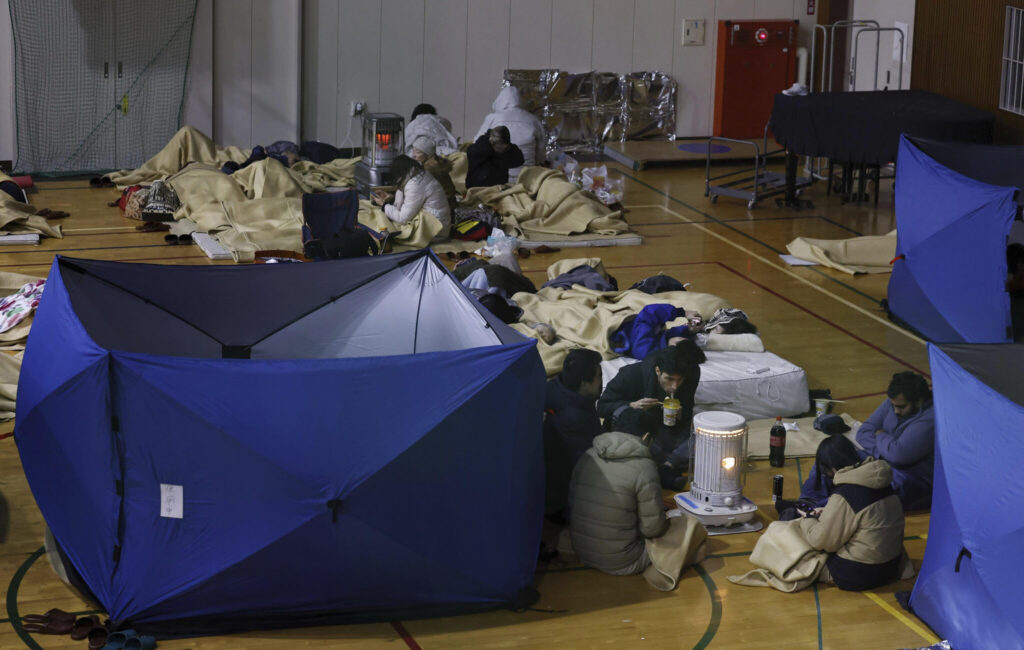
A quake with a preliminary magnitude of 5.6 shook the Ishikawa area as he was speaking. More quakes continued to rock the area, reaching more than 100 aftershocks over the past day.
Nuclear regulators said several nuclear plants in the region were operating normally. The 2011 quake and tsunami caused three reactors to melt and release large amounts of radiation at a nuclear plant in northeastern Japan.
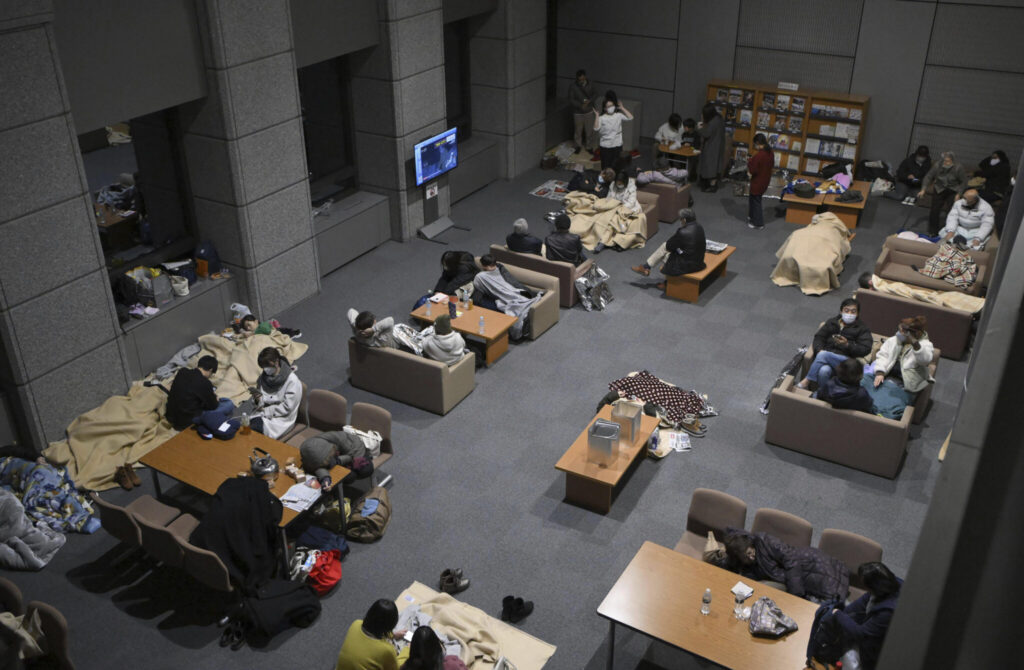
News videos showed rows of collapsed houses. Some wooden structures were flattened and cars were overturned. Half-sunken ships floated in bays where tsunami waves had rolled in, leaving a muddied coastline.
On Monday, the Japan Meteorological Agency issued a major tsunami warning for Ishikawa and lower-level tsunami warnings or advisories for the rest of the western coast of Japan’s main island of Honshu, as well as for the northern island of Hokkaido.
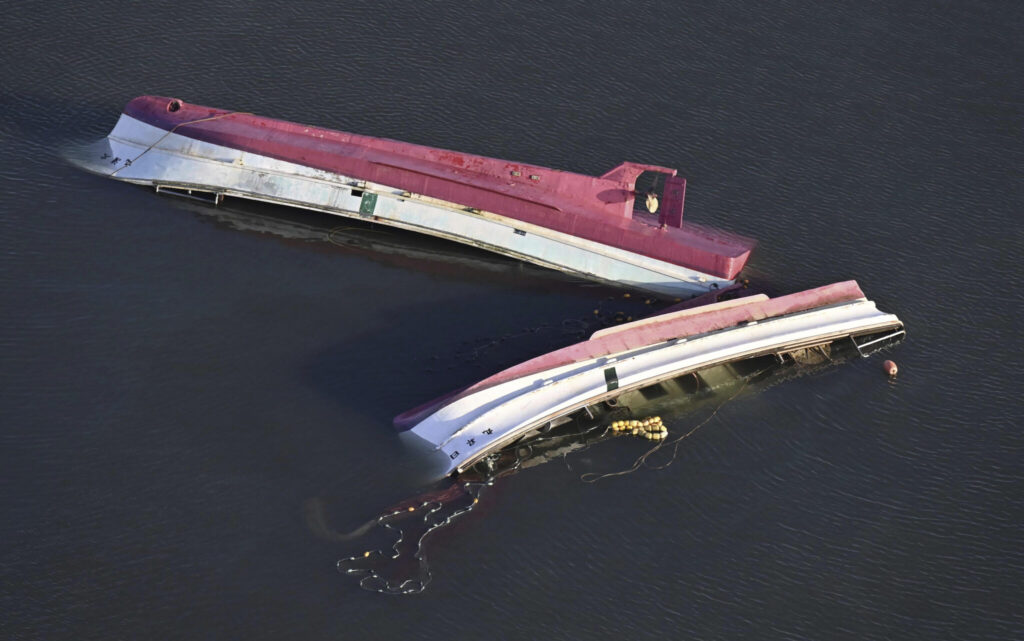
The warning was downgraded several hours later, and all tsunami warnings were lifted as of early Tuesday. Waves measuring more than one meter (3 feet) hit some places.
People who were evacuated from their houses huddled in auditoriums, schools and community centers. Bullet trains in the region were halted, but service was mostly restored by Tuesday afternoon. Sections of highways were closed.
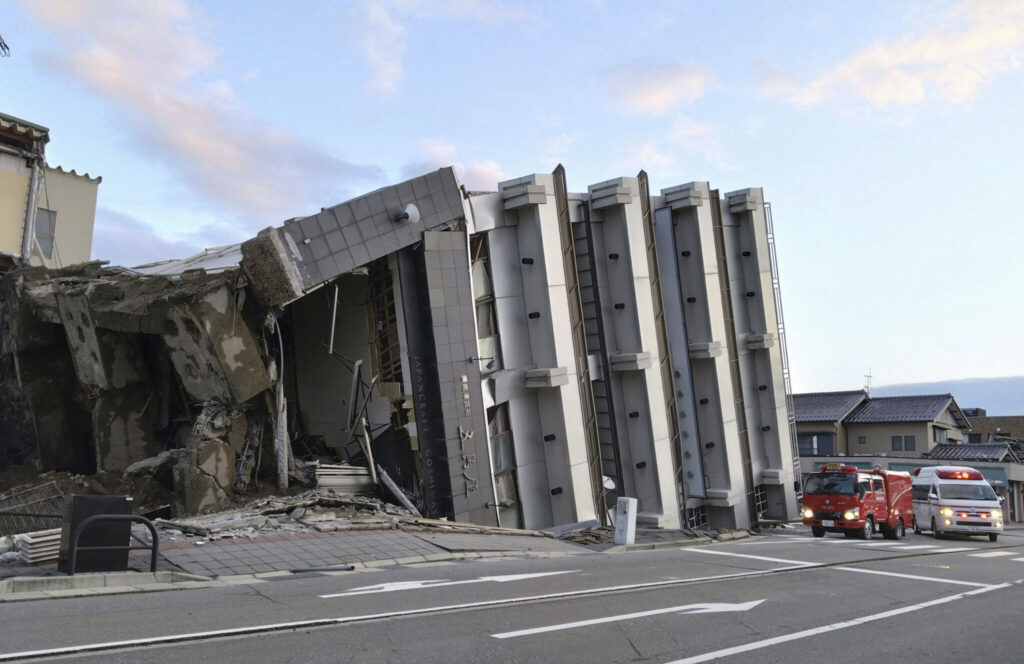
Weather forecasters predicted rain, setting off worries about already crumbling buildings and infrastructure.
The region includes tourist spots famous for lacquerware and other traditional crafts, along with designated cultural heritage sites.
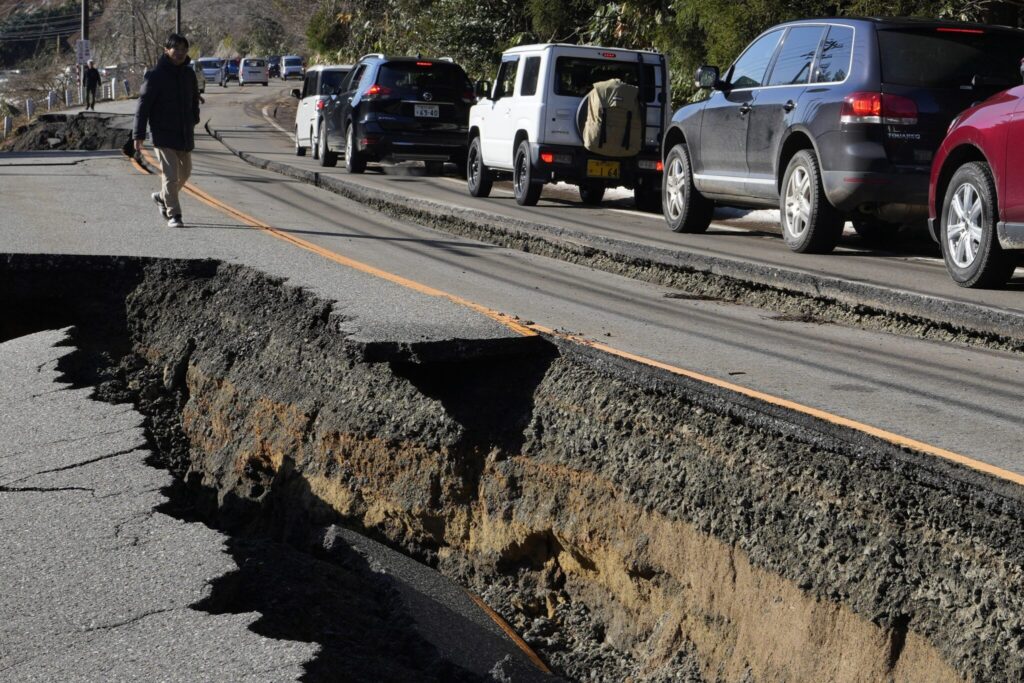
U.S. President Joe Biden said in a statement that his administration was “ready to provide any necessary assistance for the Japanese people.”
Japan is frequently hit by earthquakes because of its location along the “Ring of Fire,” an arc of volcanoes and fault lines in the Pacific Basin.







